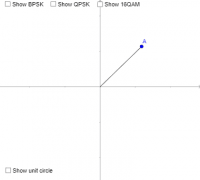Both circuits are connected to the same Y transformer. The first file takes the output of the two inverters across and through the three resistors for a total of 89.7 watts with 300 peak (rather than 294). The second takes the output of the two inverters across and through the two resistors for a total of 179.6 watts with the same 300 volts. If I adjust voltage to 334 (peak of 240), the phase to phase inverters provide a total of 228 watts. But that introduces a slightly exaggerated power output; I wanted the exact same situation in both cases. The only difference should be the first is connected L-L and the second is L-N.
You are not comparing apples to apples in your two models.
You are you 212 Vrms power sources in both cases. With the two sources delta connected to the secondaries of your transformer, your secondary voltage is 212Y/122V. Each 1 kOhm load on the primary side of the 1:1 transformer is connected L-N and will dissipate V
2/R = 122
2/1000 = 15 W (average power; the peak power over a cycle will be twice that, or 30 W). You have 3 such loads (the open delta is able to fully power all 3 legs), for a combined average power of 45W.
With the two sources wye connected to the secondaries transformer, your secondary voltage is 367Y/212V. Except that with only two sources in this configuration, you are missing a leg of the 367Y/212V system. Each 1 kOhm load on the primary side of the 1:1 transformer is connected L-N and will dissipate V
2/R = 212
2/1000 = 45 W (average power; the peak power over a cycle will be twice that, or 90 W). You have only 2 powered loads in this configuration, for a combined average power of 90W.
With different voltages (212Y/122V vs 367/212V) and different numbers of loads (3 vs 2), you can't expect to get the same result.
Your models use independent voltage sources, so you are not modeling grid-tied inverters. If you had some grid tied inverters that could sync to any voltage (within bounds), and you connect them to a system where the secondary voltage is 208Y/120V (or 212Y/122V, but I suggest eliminating this discrepancy as it is just another possible source of confusion), then the delta connected inverters will sink to 208V, and the wye connected inverters will sink to 120V.
You can model this behavior perfectly well if you manually adjust your voltage sources in the wye connected case to be 1/sqrt(3) times the voltage in the delta connected case, i.e. 120V instead of 208V (or 122V instead of 212V if you insist on maintaining the discrepancy). If you do that, you will find the power dissipation per load to be identical between the two caes. To make the overall picture identical, either remove the 3rd load from the delta-connected case, or add the 3rd inverter to the wye connected case, so that you have an equal number of powered loads.
Cheers, Wayne



